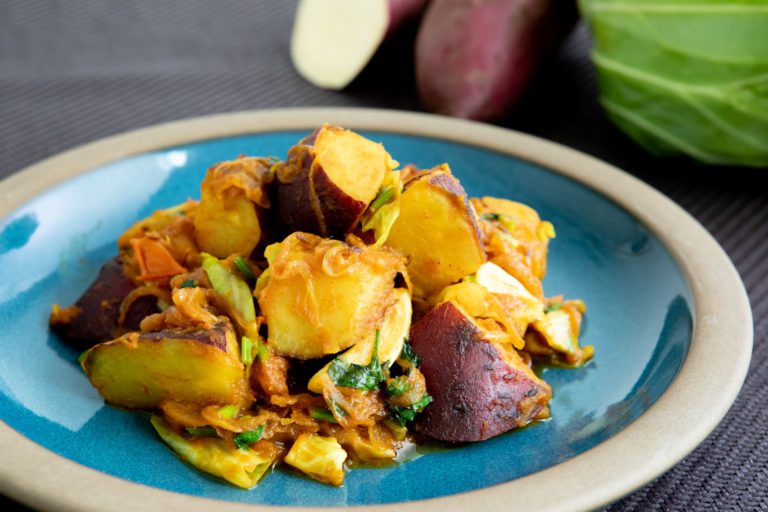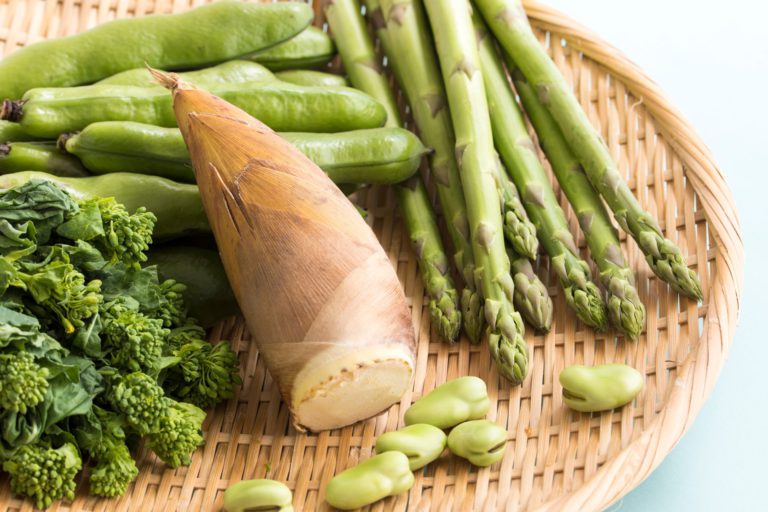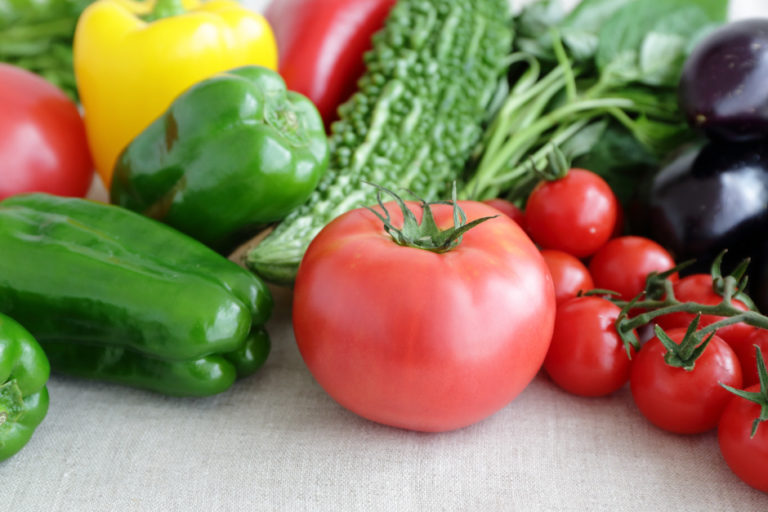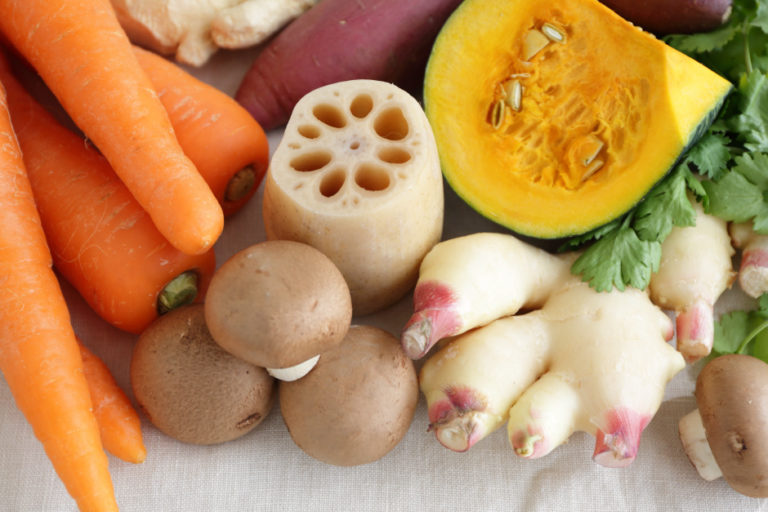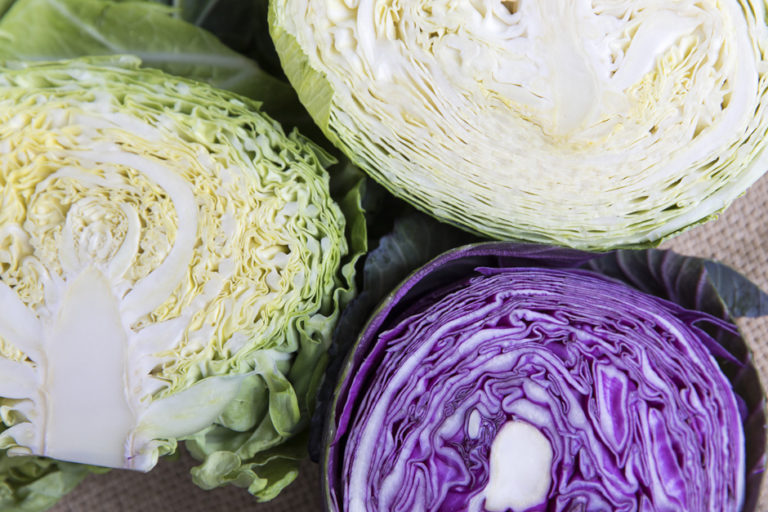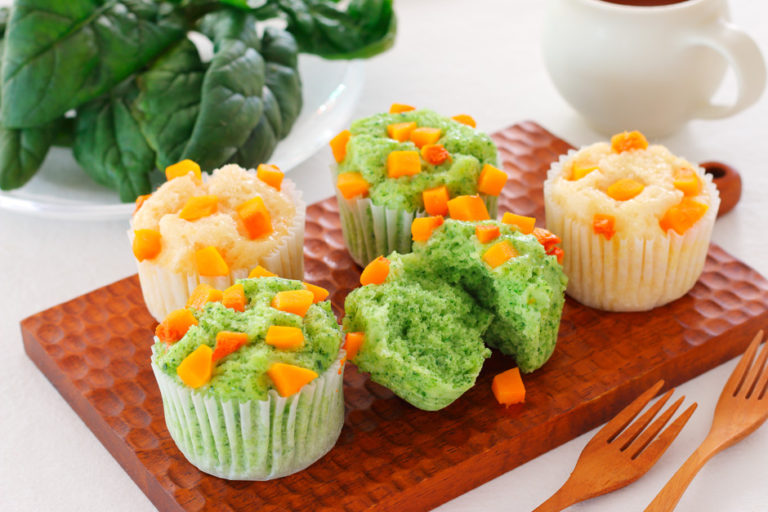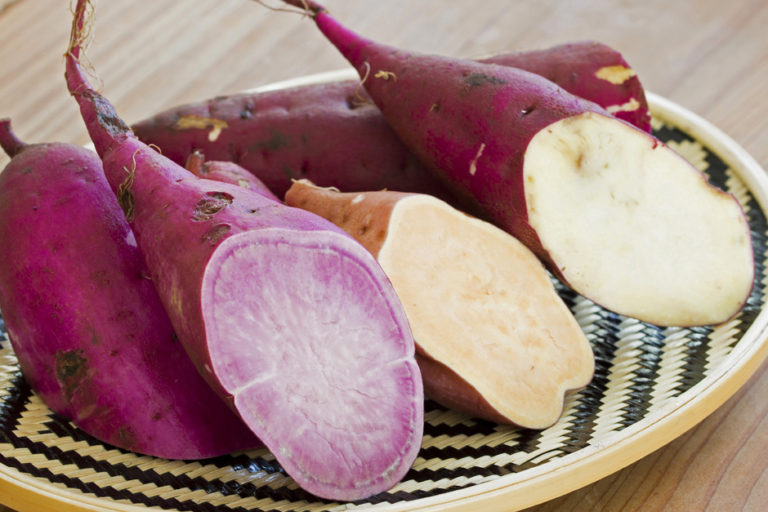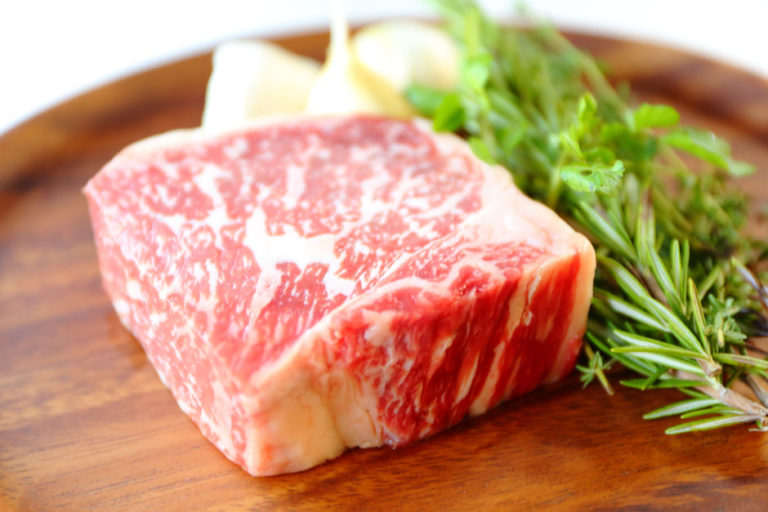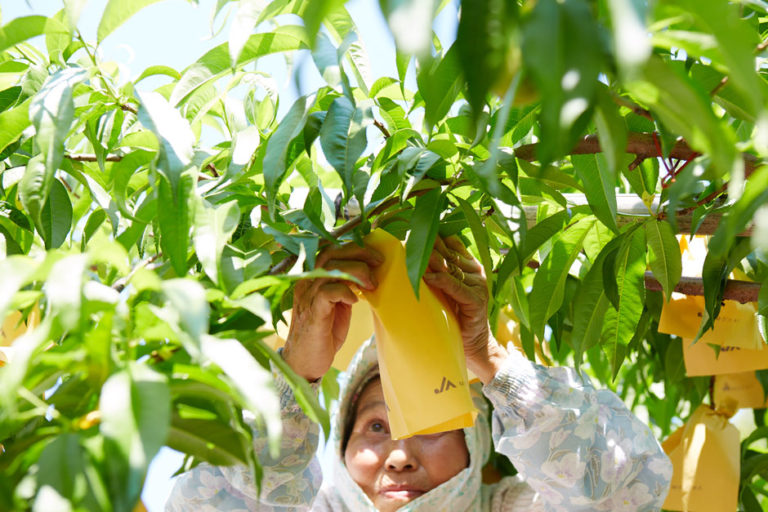Winter Vegetables Sweetened by the Bitter Cold
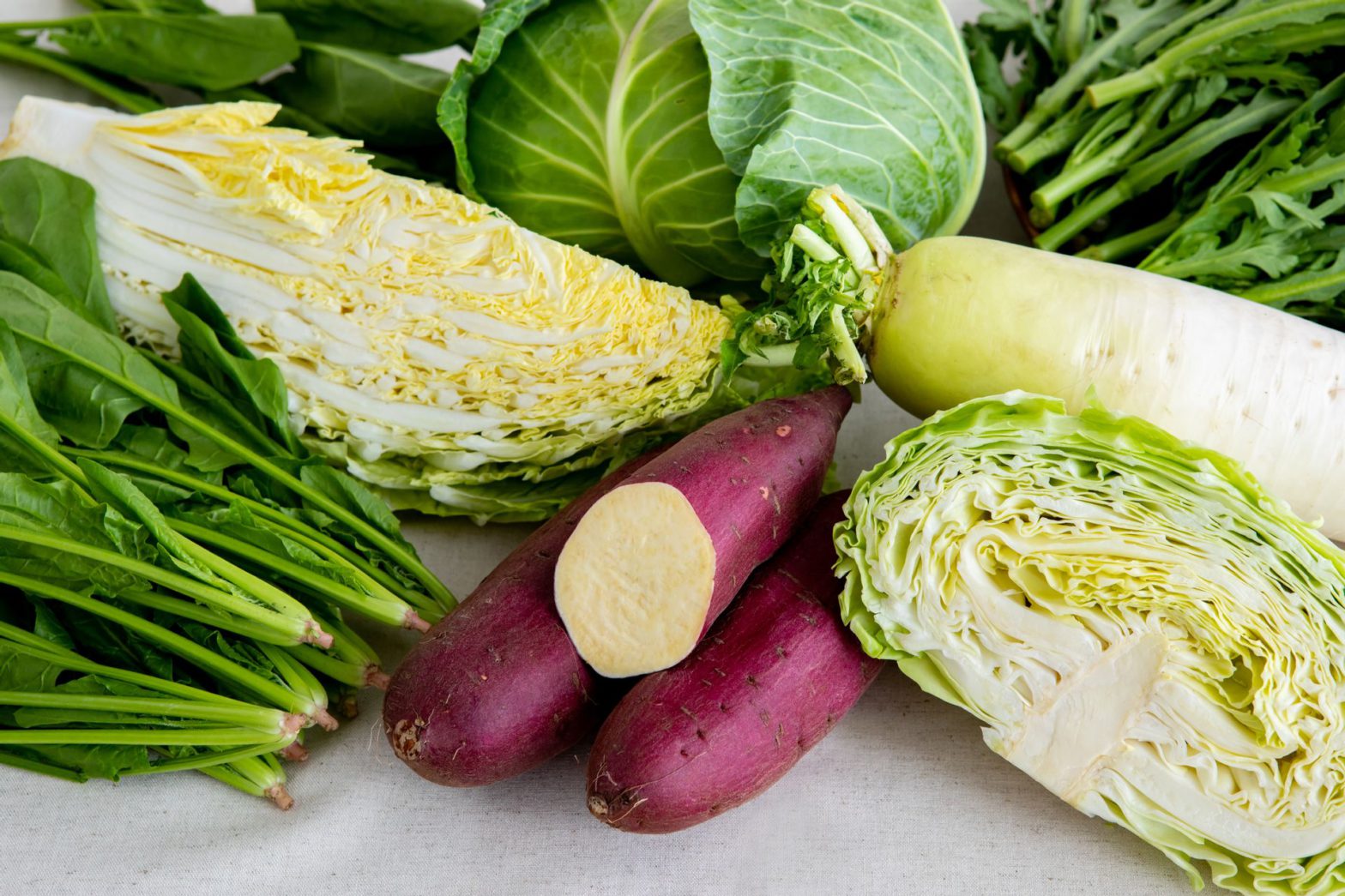
Winter vegetables sweetened by the cold
A calendar called the twenty-four solar terms, dividing the year into 24 periods based on the sun’s movement, aptly represents Japan’s passing of the seasons. The seasons of vegetables, which are plants, also change with the twenty-four solar terms.
Winter in the twenty-four solar terms begins with Ritto around November 7 and runs through Shosetsu, Taisetsu, Toji (winter solstice), Shokan, and Daikan until mid-January.
During the bitter cold of the winter season, many vegetables are characterized by their high sugar content because they accumulate sugar in their cells to prevent them from freezing. Many of them are also highly nutritious, containing things like vitamins and carotene, which are believed to boost the immune system.
Here are some vegetables that are in season during the winter.
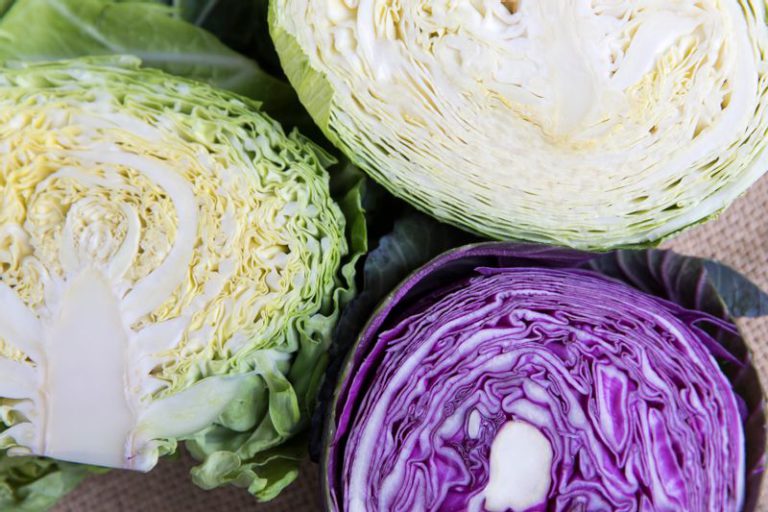
Cabbage
Cabbage is said to have originated in the Mediterranean region, and became a staple vegetable in Japan along with the spread of Western food after World War II.
The best season for enjoying delicious cabbage is winter. However, thanks to the geo-graphical factors of Japan, which stretches from the North to South, along with different cabbage types, we are also able to enjoy the diverse cabbage all year round. Kandama (cold season ball), spring cabbage and purple cabbage are the three standard cabbage types. The characteristics and “in-season” times differ for each of them.
Cabbage can be used in a wide range of dishes, as it can be eaten raw, boiled or stir-fried.
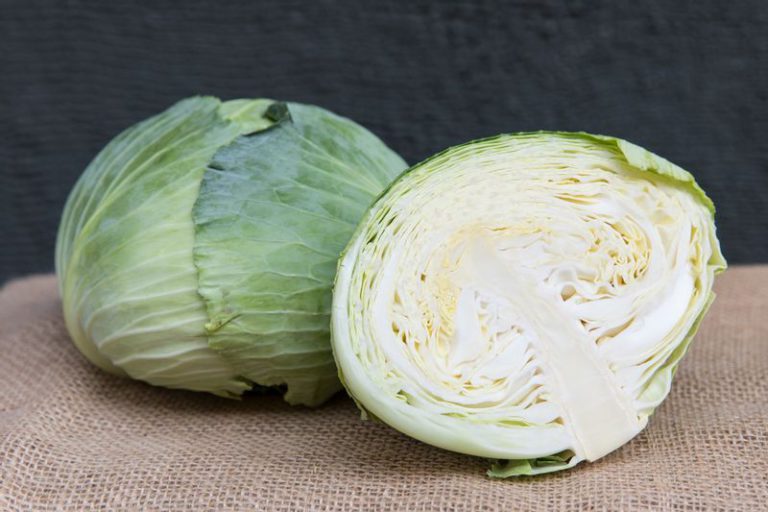
When selecting cabbage that’s in-season, look for Symmetrical leaf veins,Firm, glossy leaves,An even pentagon shape when looking at the core.
This cabbage has stiffer external leaves and a strong flavor, making it optimal for pan-frying such as butter sautés or simmered dishes such as cabbage rolls. The leaves near the center are softer and sweeter, better for eating raw such as in salads. Cabbage grown in the plains is in season from November to March, and the highland cabbage is in season from June to October. Be sure to select cabbage that is firm and heavy.
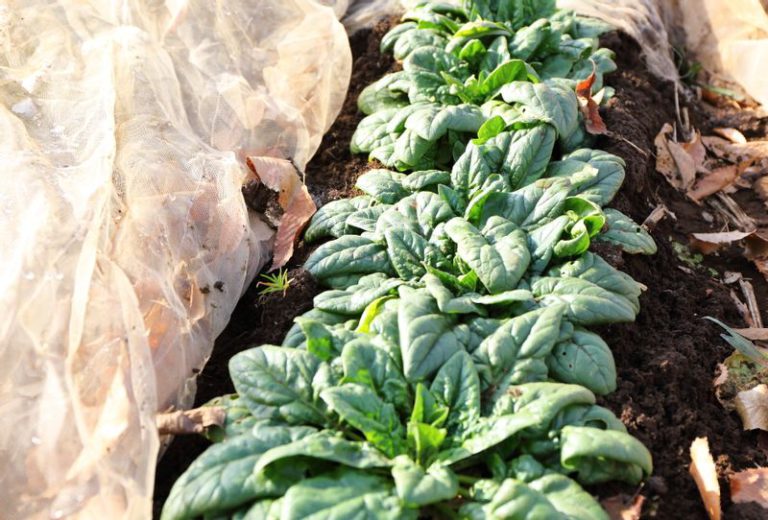
Curly spinach
Spinach is a nutrient-rich vegetable that contains vitamins, folic acid, and iron. Although it is available throughout the year, it is said to be sweeter and tastier when grown during the cold season and exposed to frost.
Peak Season is the frosty season from December through February. It is also the peak season of regular, non-curly spinach.Choose curly spinach that has light-colored young buds in the middle with thick leaves.
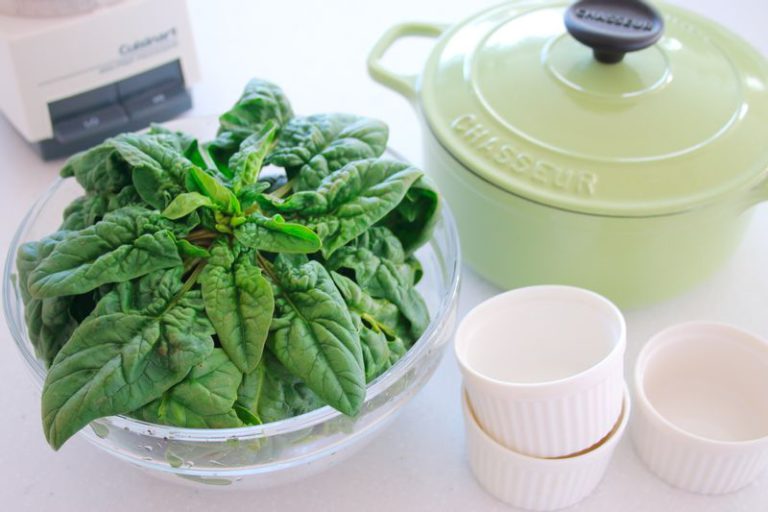
Spinach in peak season is especially high in nutrition. You want to proactively eat it. When you make confectionery with spinach, mild sweetness lingers on and there will be no unwanted green smell. Curly spinach is especially sweet so you can use it as if it is a natural sweetener
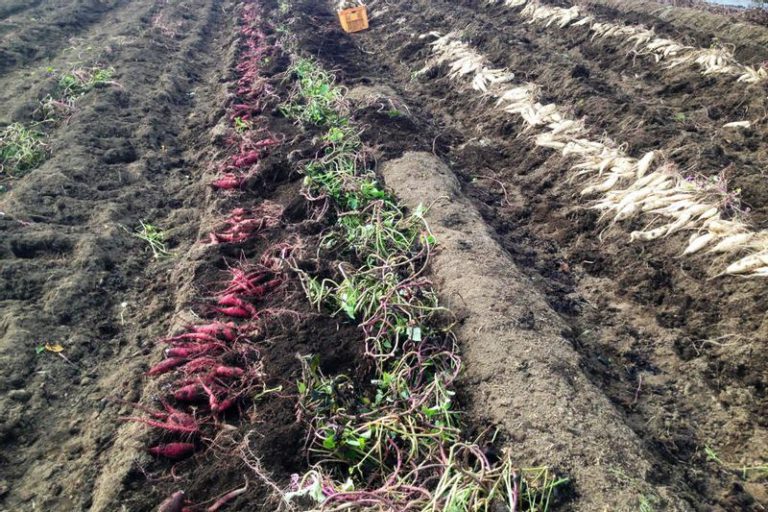
Sweet Potatoes
Sweet potatoes are in season from late fall to winter. Roasted sweet potatoes are enjoyed as a feature of the cold season, but they come in many varieties, and their sugar content varies depending on the variety and how long they are grown and stored.
After harvest, these potatoes are stored in a storehouse surrounded by soil that maintains a constant temperature. This causes starch saccharification which gradually creates a sweeter flavor, providing very sweet potatoes during January and February.
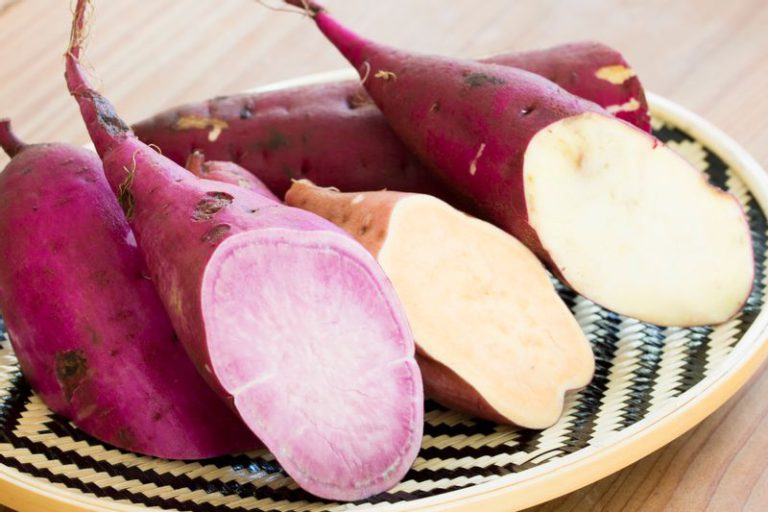
There are three major types of sweet potatoes when categorized by texture.
The first is “sticky” type. Sweet-flavored potatoes are often this type, such as the Anno sweet potato, and this type is recommended for baked sweets or baked potatoes.
The second is “moist” type. The sweet potatoes commonly found in stores such as Beniharuka fall under this category. This type holds together better after being mashed, making it perfect for dishes such as potato salads, croquettes and tempura.
The third is “fluffy” type. Variations such as Beniazuma or Kintoki sweet potatoes fall under this category and are recommended for dishes calling for soft, fluffy potatoes such as sweet potato rice.
The flavor of potatoes does not differ with size.It is recommended to choose a potato size that is easiest to cook.
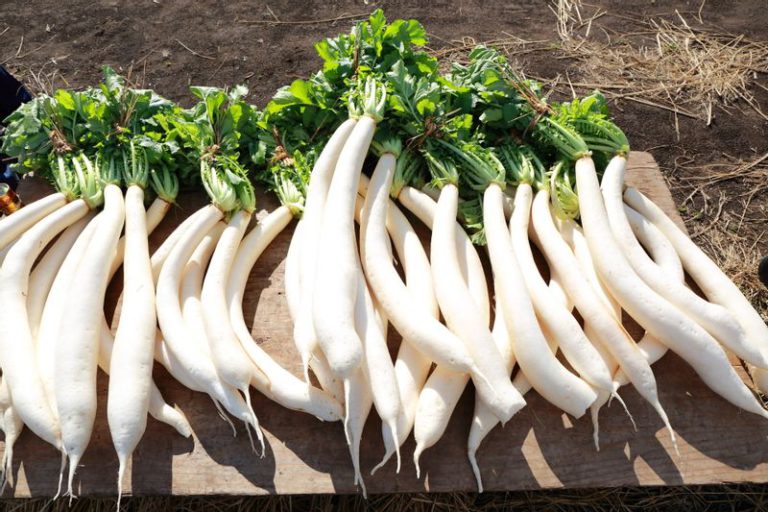
Jumonji Daikon
Daikon (Japanese white radish) is a vegetable that is commonly available all year round. It has a long history in Japan, and can be found in the oldest chronical of Japan under the name Ohone. Daikon is a genus of the family Cruciferae with diverse variations. Its shape and flavor differs between regions, such as the round Sakurajima Daikon or enormous Miura Daikon. The favored use of Jumonji Daikon, harvested in the Jumonji area of Takasaki, Gunma Prefecture, is for takuan pickles.
The harvest season for Jumonji Daikon is from November to December. The major daikon varieties are Hoshi-riso, Aki-masari, and Tsuke-hikari. These are all for takuan pickles, and these daikons grow to become over 50 centimeters long.
栽培される主な品種は「干し理想」、「秋まさり」、「漬けひかり」。いずれもたくあん漬け用の大根で、50センチ以上にまで育つのが特長だ。
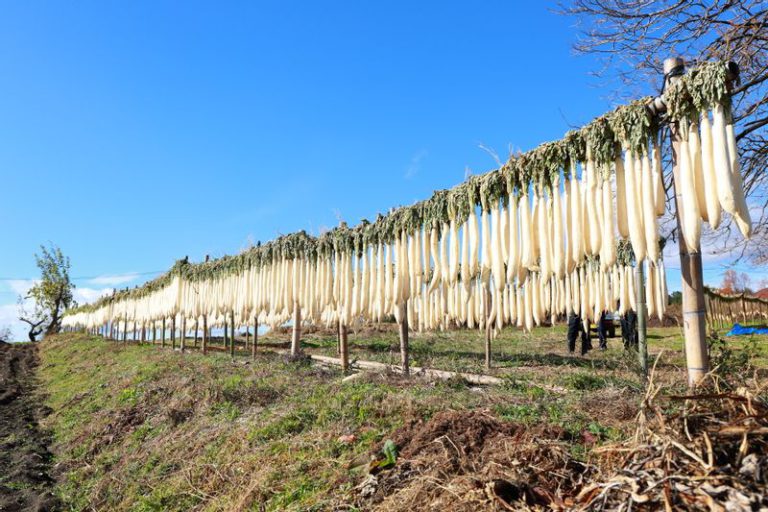
The process of washing and hanging daikon to dry needs to be done one after another, right after harvest. That is why the harvest of Jumonji daikons is a race against time. The drying process is especially important, as the way a daikon is dried affects its flavor when made into takuan pickles.
The Jumonji daikons offer a fine and crisp texture, which is accentuated when made into takuan pickles. Biting into a homemade Jumonji takuan pickle offers a delightful crunch—a texture that cannot be found in standard takuan pickles. The Jumonji takuan pickles also follow the crunch with a sweetness and a slight bitter aftertaste. These pickles have an exquisite and profound flavor.
A simple recipe for enjoying an abundance of winter vegetables
We have created a recipe that uses sweet potatoes and cabbage from the “seasonal winter vegetables” introduced here.
The recipe is for a winter vegetable sabzi that uses spices to accentuate the sweetness of the vegetables. Sabzi is made by steaming or frying vegetables in spices and has long been a favorite among Indian vegetarians.
Winter vegetables’ sweetness increases in the severe cold weather. In addition to the recipe introduced here, how about incorporating them into dishes such as hotpots and stews that warm the body from the core?

